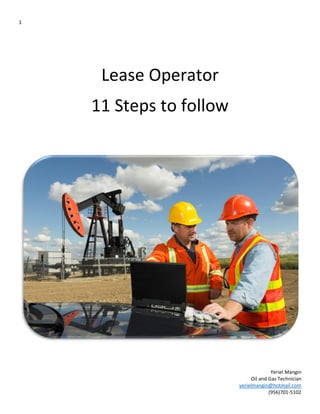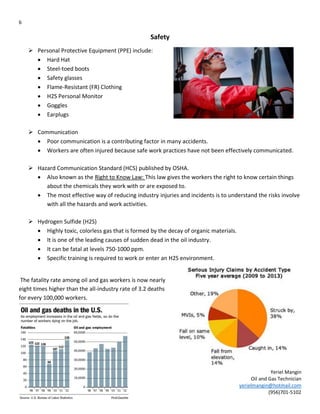The document provides steps for operating and maintaining oil and gas facilities. It outlines 11 steps including checking safety equipment, the wellhead, heater, separators, tanks, and taking readings. Key parts of the wellhead, heater, and separators are described along with their functions. Safety practices like PPE and communication are emphasized. Troubleshooting tips are provided for issues like low pressure readings and water in condensate tanks.













